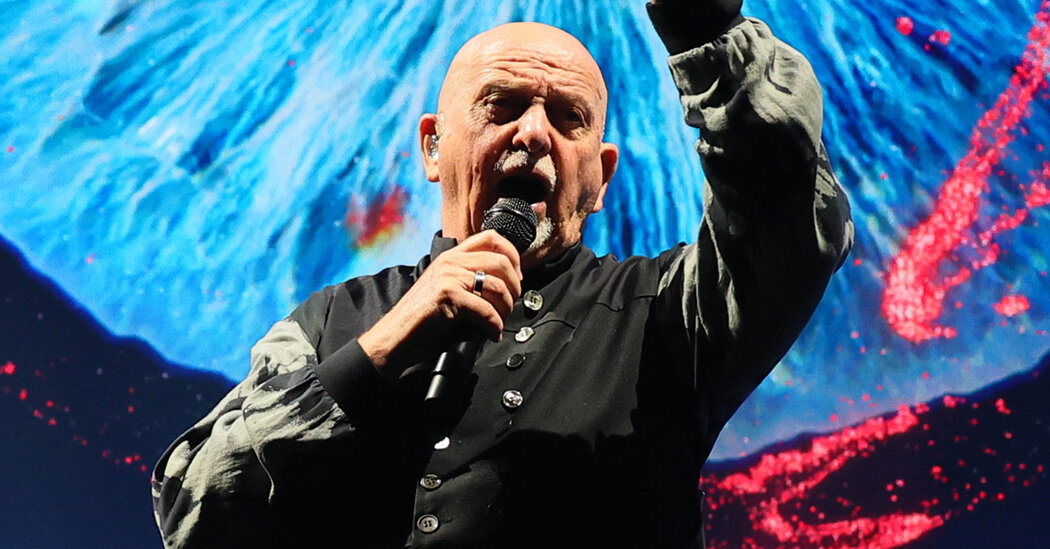As far back as his days with Genesis, the pioneering progressive-rock band he led in the 1970s before going solo, Gabriel has written about what-if scenarios. And he has been fascinated by the interaction, and tension, between humanity and technology. “They’re all beginning to overlap,” Gabriel said. “Computer tech was where the excitement was for my generation, in the creation of the internet. For my kids, I think it’s more a biotech world that is integrating nature and technology, both within and without our bodies.”
He has, of course, been thinking about artificial intelligence. “My job, your job, everyone’s jobs are going to be really well done by A.I.,” he said. “And so then what? There’s a designer called Gaetano Pesce, and he had this saying, which is ‘Beauty in the future will lie in the imperfection.’ So to try and get a sense of who we are, where our humanity is and what we want to be, is very important. We’ve got this very awkward adolescence as a sort of human-tech hybrid, which is going to be painful and difficult. But I do believe that if we survive it, that an age of abundance is a real thing.”
Since January, Gabriel has been releasing a new song from “I/O” each month on the date of the full moon, honoring a natural cycle. He has paired each song with an image by a contemporary artist. A painting by Micallef — who captures “both the horror and hopefulness of humanity,” Gabriel said — was turned into the animated video for “Love Can Heal,” a rippling, glimmering electronic promise of absolution sung in Gabriel’s gentlest tones.
When Gabriel announced the album’s full-moon schedule in November 2022, its music was still a work in progress. The songs had accreted parts over decades, with material from Gabriel’s longtime band; from the polymorphous musician Brian Eno; from Swedish and South African choirs; from orchestral arrangements; and from Gabriel’s library of samples and sessions.
The finished album deliberately offers alternatives. Each song arrived in two distinct versions, a “Bright-Side” mix by Mark Spike Stent and a “Dark-Side” mix by Tchad Blake. Stent’s mixes are glossier and more three-dimensional; Blake’s offer close-up physical grain and intimacy. (A third version of the album, with spatial-audio “In-Side” mixes by Hans-Martin Buff, is available for the Dolby Atmos system.)
“It’s never right and wrong — it’s a choice, isn’t it?,” Stent said from his studio near Salisbury, England. “I think it’s quite interesting what Peter has done here — to let the listener decide. We all interpret music in different ways. “


